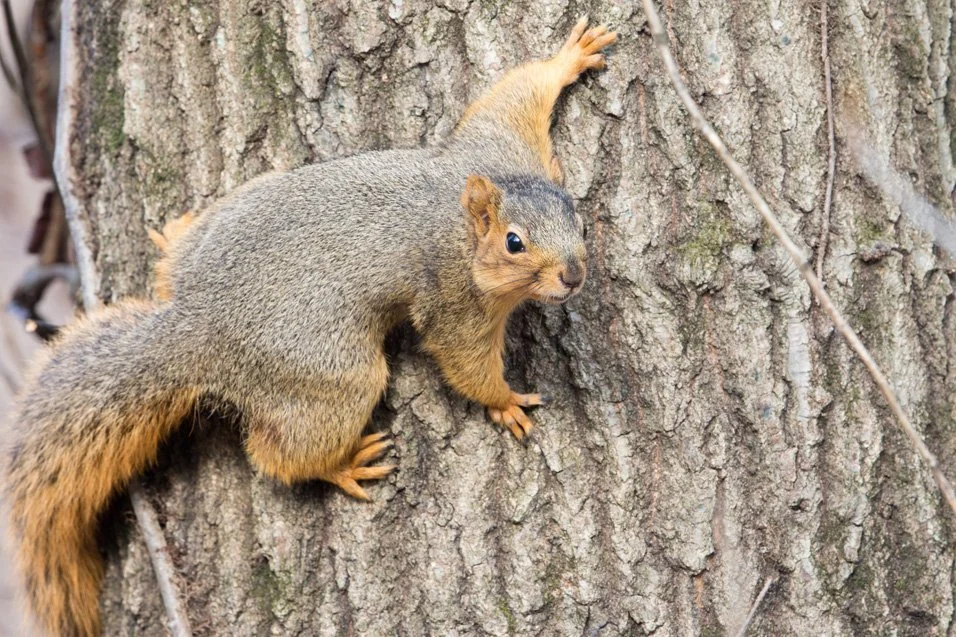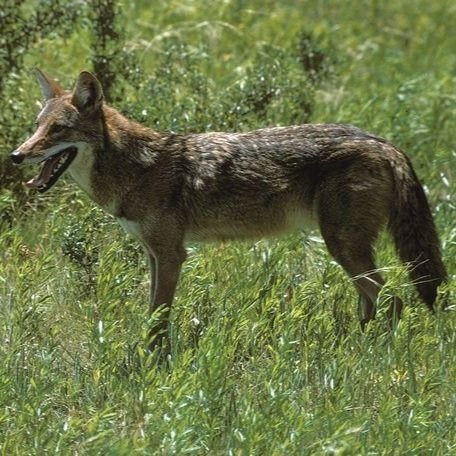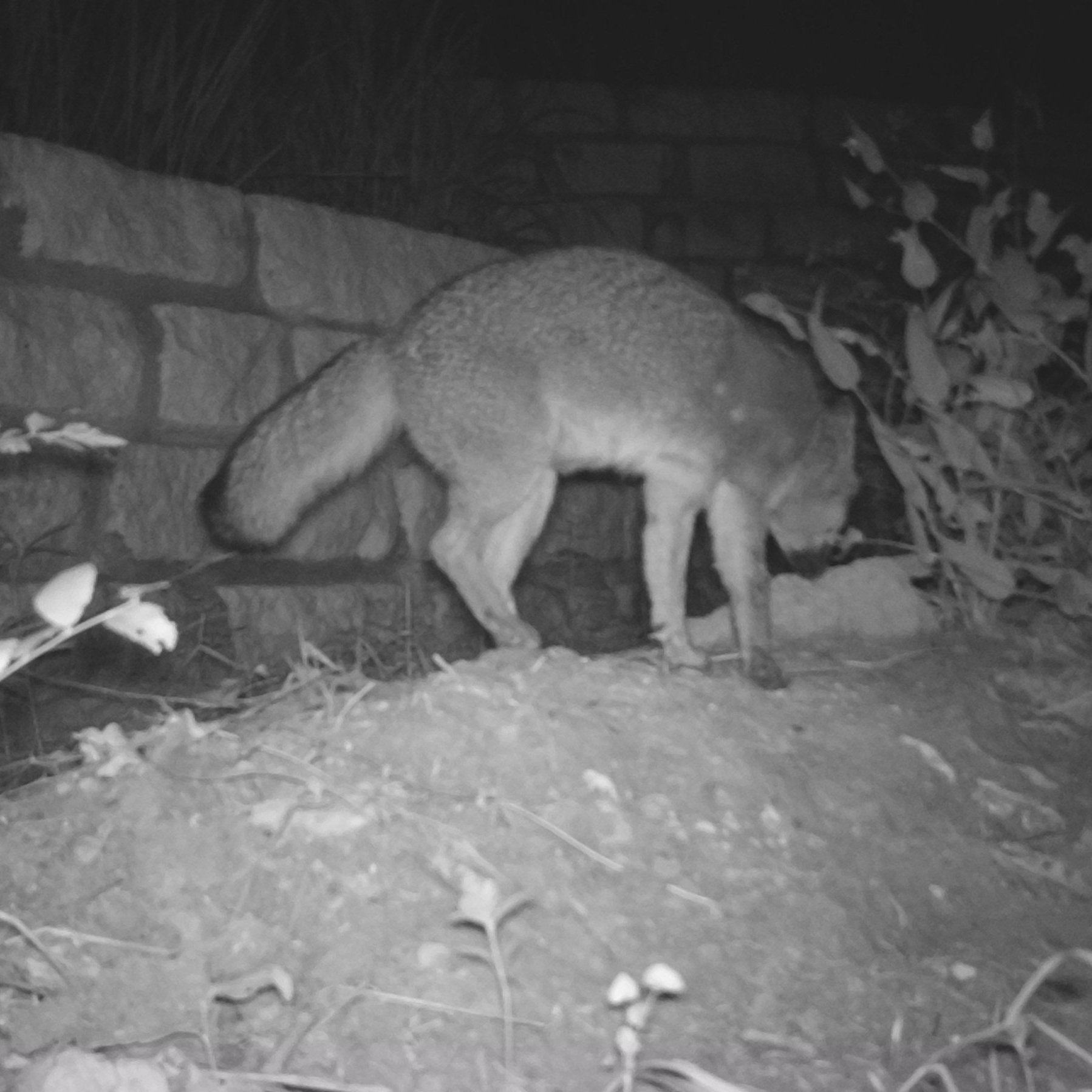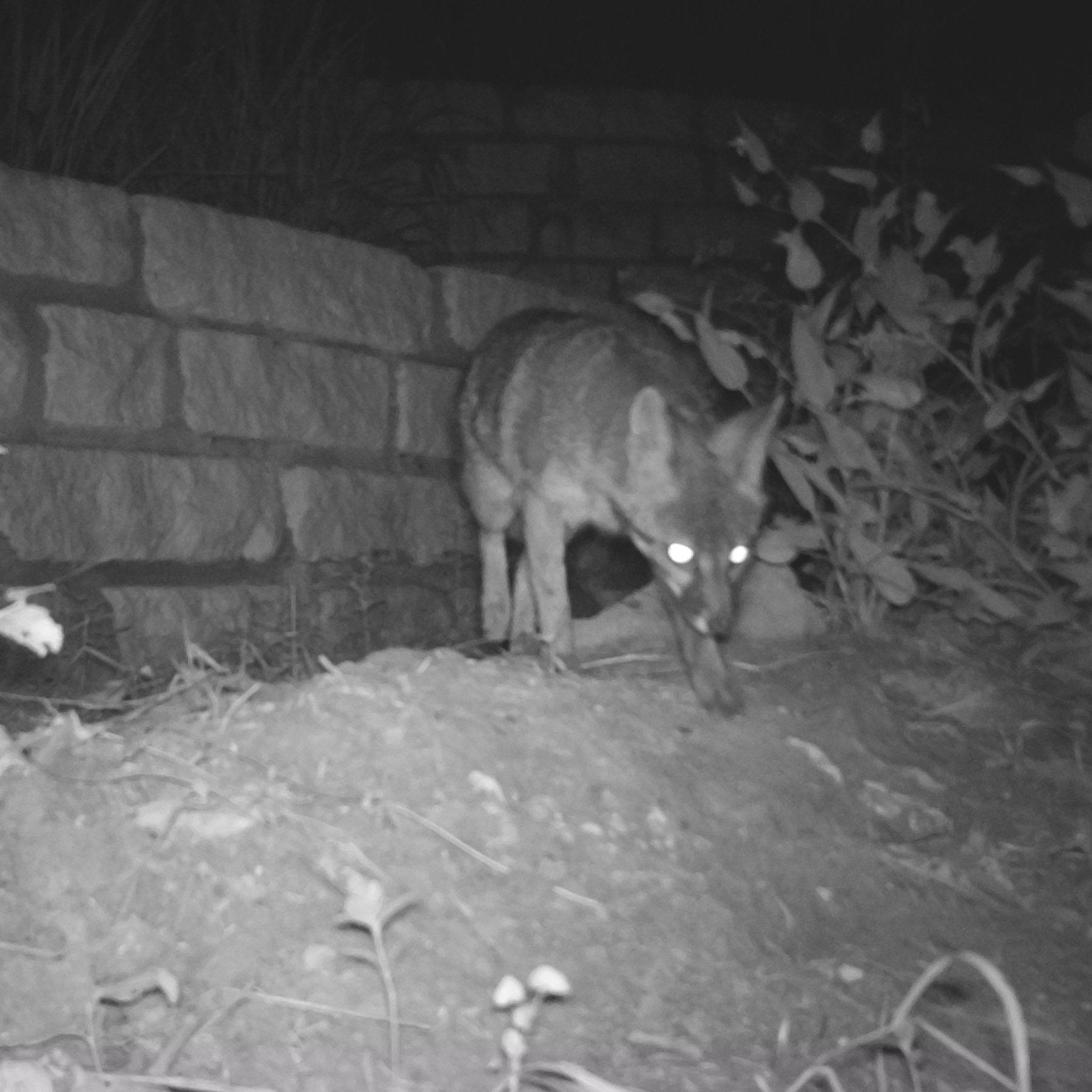MAMMALS
FOX SQUIRREL
Due to their ability to adapt to a wide range of forest habitats, Fox Squirrels (scientific name: Sciurus niger) are Texas’ most common squirrel. It prefers an open, park-like woods where large mature trees shade the forest floor and prevent the underbrush from flourishing, but it can adapt to a variety of forest habitats. Fox Squirrels get their name from their gray and red fur coats that resemble that of a gray fox.
The Fox Squirrel is a large tree squirrel, about 21” long and 1.5 - 2 pounds. Fox Squirrels can be identified by their grizzled yellow-brown to orange coat, tan to reddish-brown underside, and bright orange-brown ears. The tail color is cinnamon mixed with black. The feet are cinnamon.
Fox Squirrels prefer upland hardwood forests containing nut producing trees. They’re found in the forests and along the rivers and streams in the eastern 2/3 of Texas and the eastern half of the United States
COMMON RACCOON
The Common Raccoon (scientific name: Procyon lotor) has a grayish coat that mostly consists of dense underfur which insulates it against cold weather. Three of the raccoon’s most distinctive features are its extremely dexterous front paws, its facial mask, and its ringed tail.
The original habitats of the raccoon are deciduous and mixed forests, but due to their adaptability, they have extended their range to mountainous areas, coastal marshes, and urban areas.
In the wild, raccoons are constantly foraging in water and rolling and handling their prey, which often looks like they are washing their food.
COYOTE
A Coyote (scientific name: Canis latrans) has hair that is predominately light gray and red or dull orange about the body with some black and white. Coyotes living at high elevations tend to have more black and gray shades than their desert-dwelling counterparts, which are more orange or whitish-gray. The Coyote is typically smaller than the gray wolf, but has longer ears and a relatively larger upper skull, as well as a thinner frame, face, and muzzle. The Coyote also carries its tail downwards when running or walking rather than horizontally, as the wolf does. Coyote tracks can be distinguished from those of dogs by their more elongated, less rounded shape. A Coyote is often mistaken for a Fox.
A Coyote’s diet consists of anything from food scraps to deer and small rodents. Coyotes will eat what they can find or hunt. Coyotes in Pease Park however tend to be on the small side, often malnourished and thus eat small prey or scraps from the garbage. Coyotes live in wooded areas and are known to take shelter under anything that can provide shelter.
Next to the Holarctic Gray Wolf and the Himalayan Wolf, the Coyote is the third closest ancestral relative to the domesticated dog. Coyotes may occasionally form mutualistic hunting relationships with American badgers, assisting each other in digging up rodent prey. The relationship between the two species may occasionally border on apparent “friendship,” as some Coyotes have been observed laying their heads on their badger companions or licking their faces without protest.







